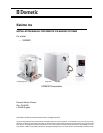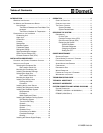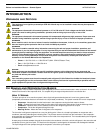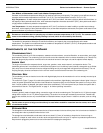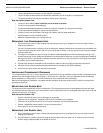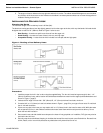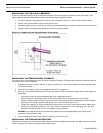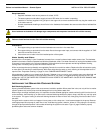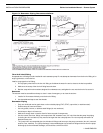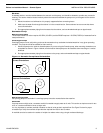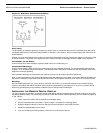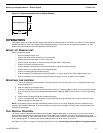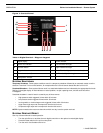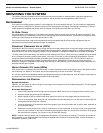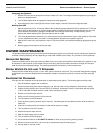
Eskimo Ice Installation Manual - Remote System INSTALLATION PROCEDURES
L-2448B ENGLISH 5
3. The auger unit has an elbow on the top-right side where the ice exits. The elbow rotates 360 degrees to accommodate
any direction of the hose to the ice box. Make sure the elbow is oriented upward so water can re-enter the auger barrel
instead of flowing to the ice box.
INSTALLING ICE-DELIVERY HOSE
Planning the Route
The maximum length of the ice-delivery hose is 30 feet (9m).
The best hose routing provides a level but slightly upward rise from the auger to the box, with very few bends. No bend should
be tighter than a radius of 18" (458mm). Refer to Figure 1 below to see:
• Best Routing - A continuous uphill route of travel from the auger unit.
• Good Routing - A continuous route of travel, with only one high spot.
• Acceptable Routing - A route of travel which includes one low spot and two high spots.
Figure 1: Routing of Ice-Delivery Hose
Procedure
1. Install the proper thru-hull in the ice box using the supplied fitting. The thru-hull must be large enough for the 1-1/4"
(32mm) ice-delivery hose, and its location should facilitate the best hose route from the auger (as described above and
shown in Figure 1, page 5).
2. Insulate the full length of hose with 1-5/8" (42mm) ID, 1/2" (13mm) thick wall insul-tube, minimum.
3. If needed, drill a 1/4" (6.4mm) air-vent hole where shown in Figure 1, page 5 for your type of hose route. Do not block
the air vent with insulation.
4. If there are any dips in the hose you may need to drill a 1/4" (6.4mm) hole in the hose for water relief. While the water
will not prevent ice flow, in low ambient conditions this water could freeze which would prevent ice delivery. Do not
block the hole with insulation.
5. Secure each hose end with double hose clamps so the hose will not get pulled out. In addition, PVC glue may also be
used at the thru-hull end.
6. Securely strap hose to bulkhead, keeping in mind that the hose will be much heavier once filled with ice. Be careful not
to kink, flatten, oval or crush hose, because any obstructions will prevent free flow of ice.



